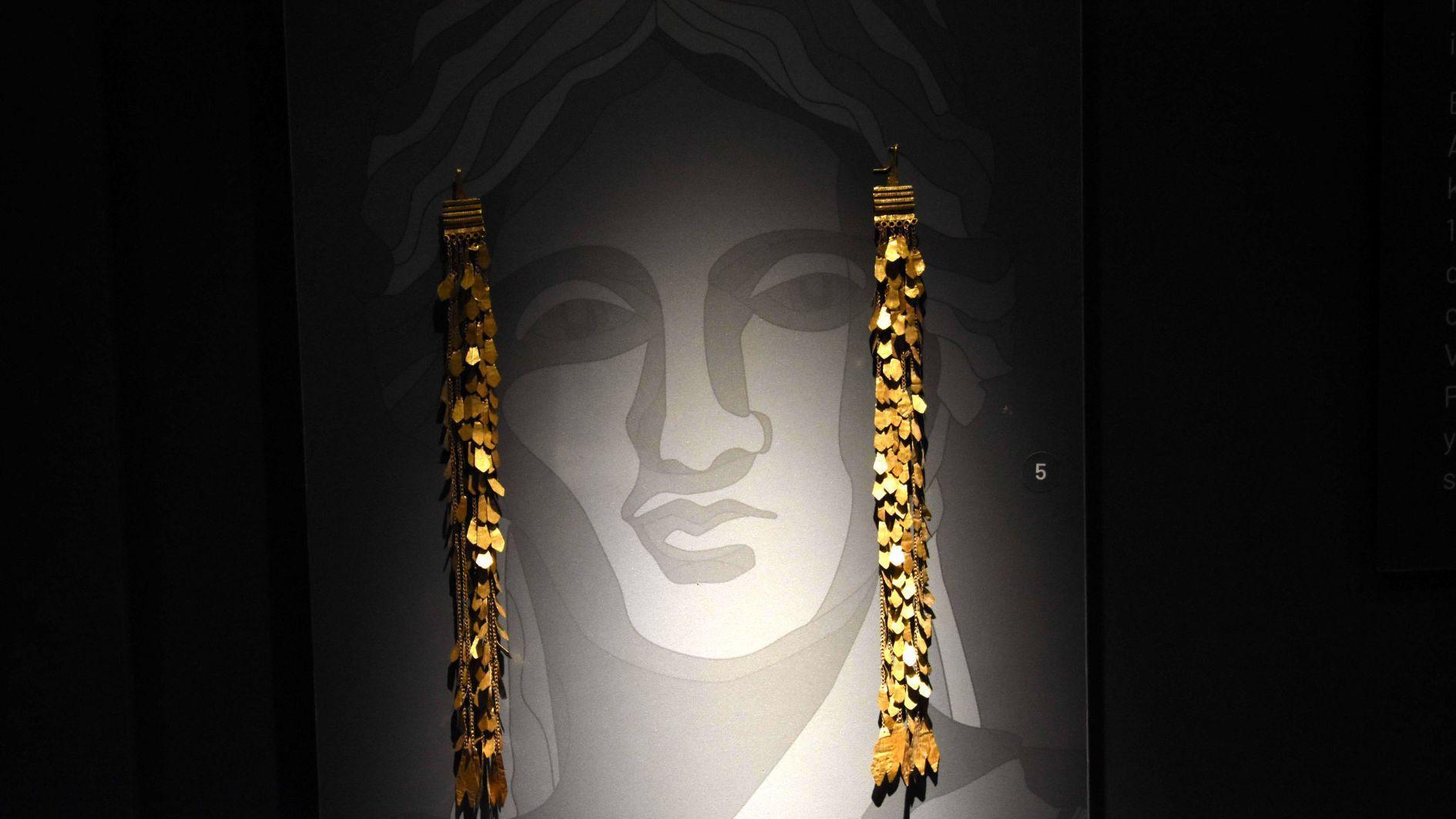
A new photo exhibition, titled “Troy Treasures: Please Come Back,” which explores the stories behind the famed “Troy Treasures” and around 30 groups of artifacts made from precious metals and stones, has opened at the Terra Santa Monastery in Istanbul’s Beyoğlu district.
Hosted by the Beyoğlu Municipality in collaboration with the Istanbul Marmara Education Foundation and Maltepe University, the exhibition opened its doors recently with a ceremony at the historic monastery.
Curated by Erkan Özdilek, the show was launched with the attendance of Beyoğlu Mayor İnan Güney and Professor Celal Oktay Yalın, Dean of the Faculty of Fine Arts at Maltepe University.
In addition to the world-renowned “Troy Treasures,” famously discovered by Heinrich Schliemann in 1873 and known to the archaeological world as “Treasure A,” the exhibition presents the stories of some 30 groups of artifacts crafted from valuable materials. The collection seeks to express, through art, the longing for cultural heritage to return to its place of origin.
Beyoğlu Mayor Güney said the exhibition take visitors on a powerful journey through the region’s history. “We live on land of immense value and ancient heritage,” he said.
“Sometimes a stone, a ruin, or a story reveals traces of the past. These lands are home to a cultural legacy beyond comprehension. I would also like to highlight the name of an important figure from the Ottoman era, Saffet Pasha, who served in key positions during one of the empire’s most difficult periods. Through his efforts, including a nationalization decree, the Ottoman Empire retained ownership of many of the artifacts unearthed in Troy. If some of the Troy Treasures returned home today, it is thanks in part to him. Historical artifacts are meaningful only when they remain in the land where they were born. I feel and experience this deeply in the streets of Beyoğlu. Protecting our heritage means honoring our ancestors. That’s why we preserve Beyoğlu — the cultural heart of our land — with all its richness and art.”
Yalın emphasized the significance of the exhibition, saying, “In this photo exhibition, which features work by over 80 photographers, you will see images of Troy Treasures smuggled abroad. Among them are also pieces currently on display in Türkiye, including in Istanbul. By showcasing works now scattered across Germany, the U.K., Russia, and our own country, we aim to send a message: These cultural treasures belong to the lands they came from. That’s why we added the title ‘Please Come Back’ to the exhibition.”
Story of Troy Treasures
The Troy Treasures were uncovered in the late 19th century by German merchant and amateur archaeologist Heinrich Schliemann during excavations on Hisarlık Hill.
On May 31, 1873, Schliemann discovered what he called the “Treasure of Priam,” now known as “Treasure A,” a collection of gold jewelry, precious stones, and various archaeological items dating back to the Troy II era. Schliemann illegally smuggled the treasure abroad in violation of Ottoman law. Despite legal action by the Ottoman government, the artifacts were eventually taken to Berlin. They vanished during World War II, only to resurface in 1992, when it was revealed that they had been seized by Russia as war spoils. Since 1995, the treasures have been on display at the Pushkin Museum in Moscow.
The “Troy Treasures: Please Come Back” exhibition will be open to visitors through May 20.